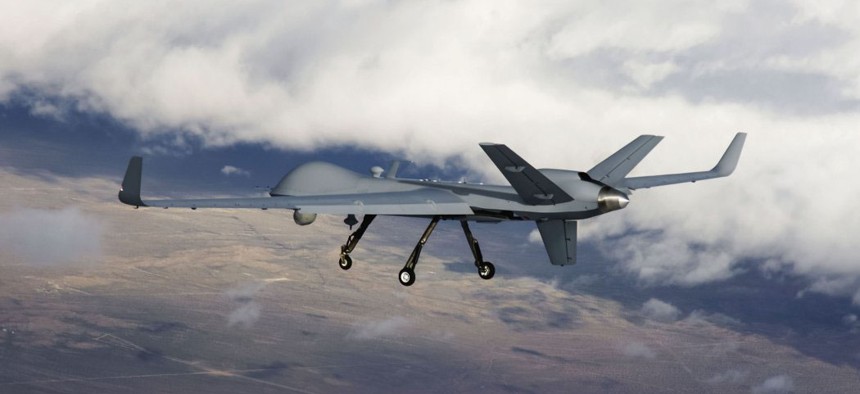Reaper's retrofits extend its range and endurance
General Atomics said the unmanned aircraft's longer wings and greater fuel capacity take its flight endurance from 27 to 40 hours.
The contractor for the famed MQ-9 Reaper has announced that it conducted successful test flights with retrofits designed to increase the unmanned aircraft’s endurance.
The retrofits for the Predator B/MQ-9 Reaper Extended Range (ER) Long Wing, as General Atomics calls it, include a 13-foot wingspan extension that takes the expanse of its wings to 79 feet, greater internal fuel capacity and hard points for carrying external stores. The improvements will increase the Reaper’s flight endurance from 27 hours to 40 hours, General Atomics said in a release. Other improvements include short-field takeoff and landing performance and spoilers on the wings to enable precision automatic landings.
“Predator B ER's new 79-foot wing span not only boosts the RPA's endurance and range, but also serves as proof-of-concept for the next-generation Predator B aircraft that will be designed for Type-Certification and airspace integration,” said Linden Blue, CEO of General Atomics. “The wing was designed to conform to STANAG 4671 [NATO Airworthiness Standard for RPA systems], and includes lightning and bird strike protection, non-destructive testing, and advanced composite and adhesive materials for extreme environments.”
During the test flight, which took place on Feb 18, the aircraft climbed to 7,500 feet and completed basic airworthiness maneuvers.
The aircraft is clearly the Air Force’s favored unmanned platform for mid-level ISR and close air support. The service has continued to invest in the platform, planning to buy 24 new aircraft in fiscal 2017 using funds allocated to the Overseas Contingency Operations budget, although officials are also interested in developing the next iteration, the MQ-X.
The Air Force has planned on phasing out the MQ-1 Predator, the Reaper’s predecessor, and one challenge is developing the next generation of drones is dealing with more contested electromagnetic domains—called anti-access/area denial in military speak—that render the relatively slow-moving Reaper susceptible to countermeasures.
General Atomics said that the longer wings are just the first components for its Certifiable Predator B development project leading to production in early 2018. As part of this program further hardware and software upgrades include improved structural fatigue and damage tolerance, robust flight control software and adverse weather operation enhancements are planned.
The Air Force already operates extended range Reapers with wing-mounted fuel tanks.





